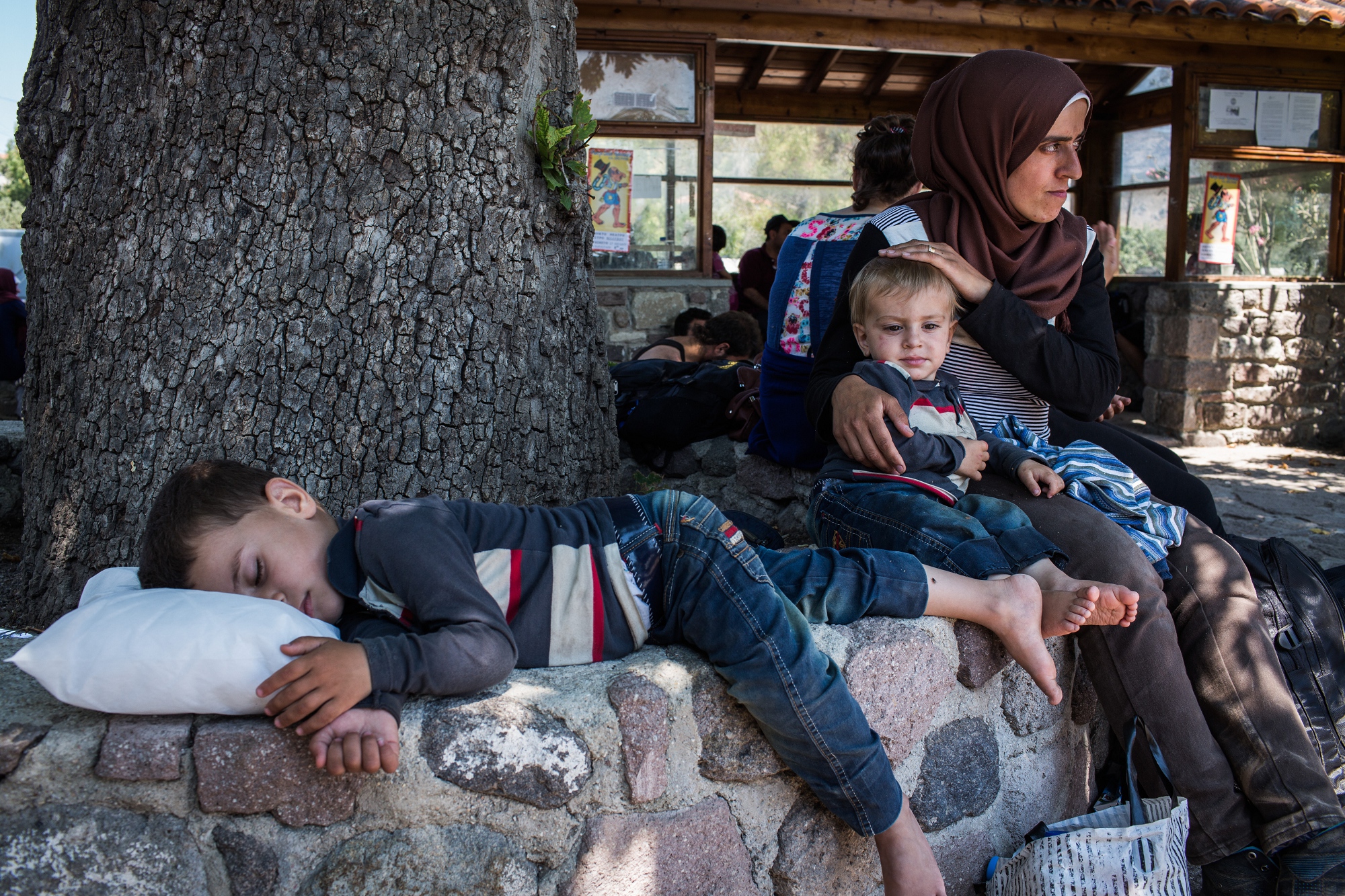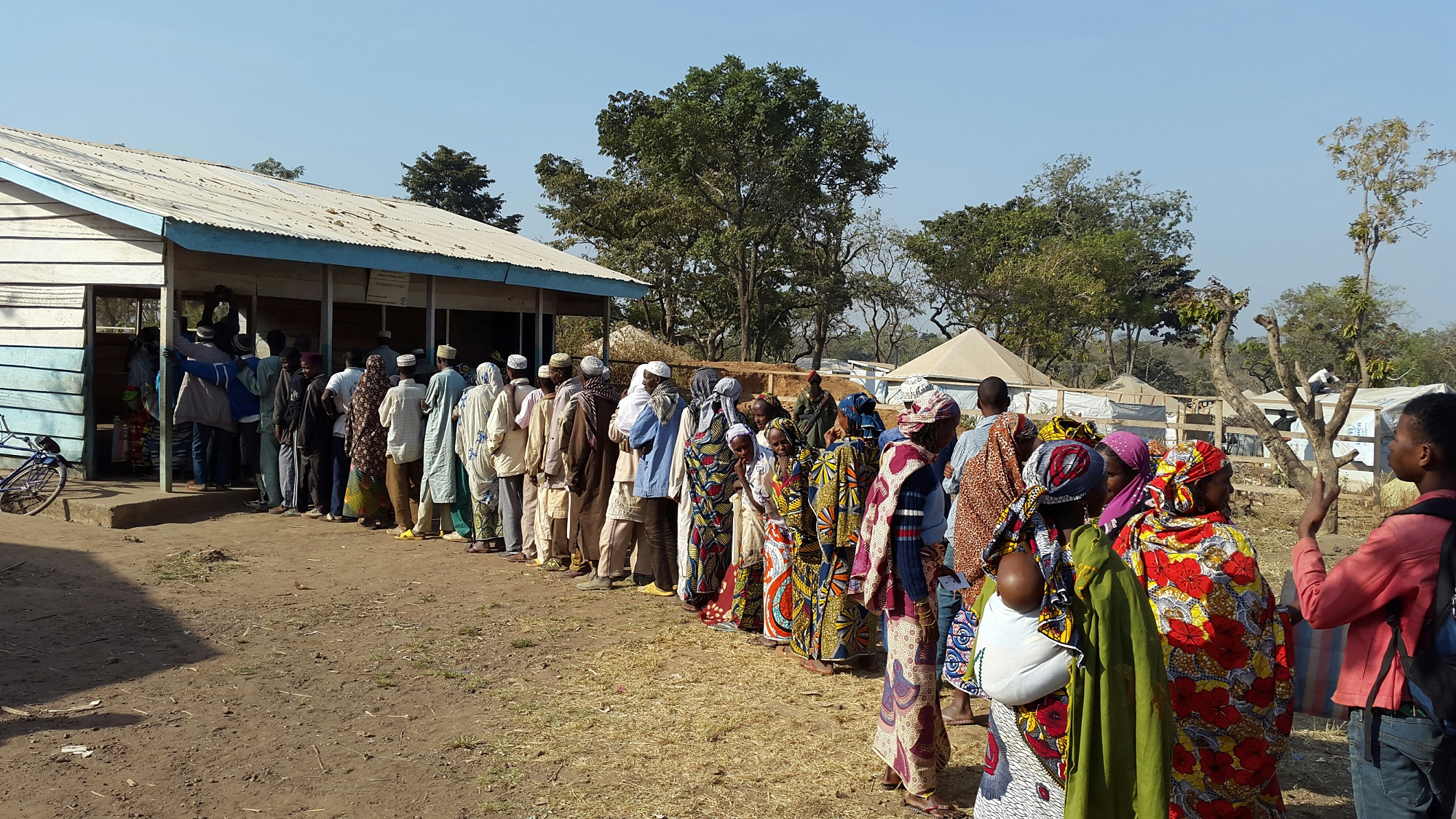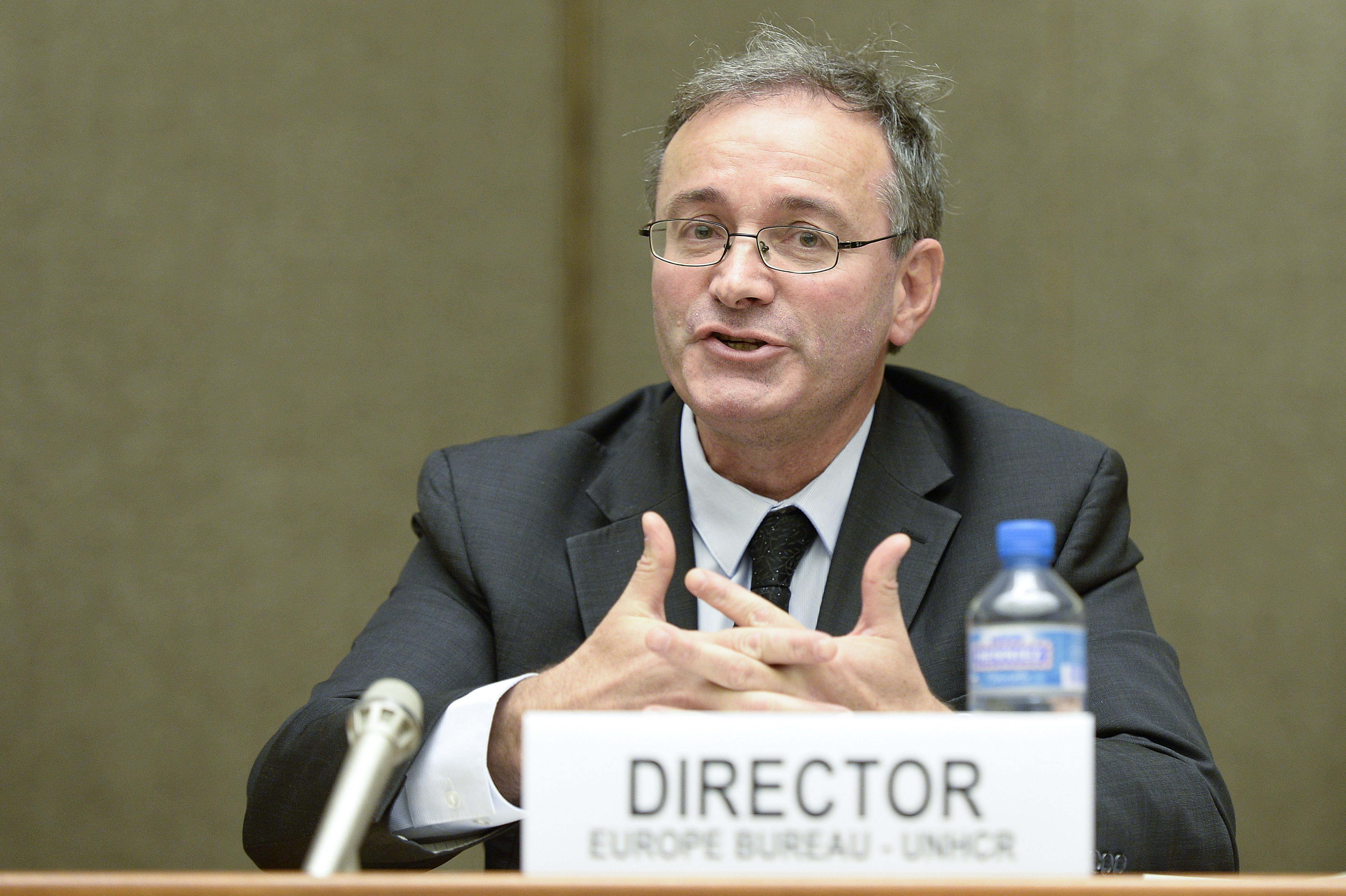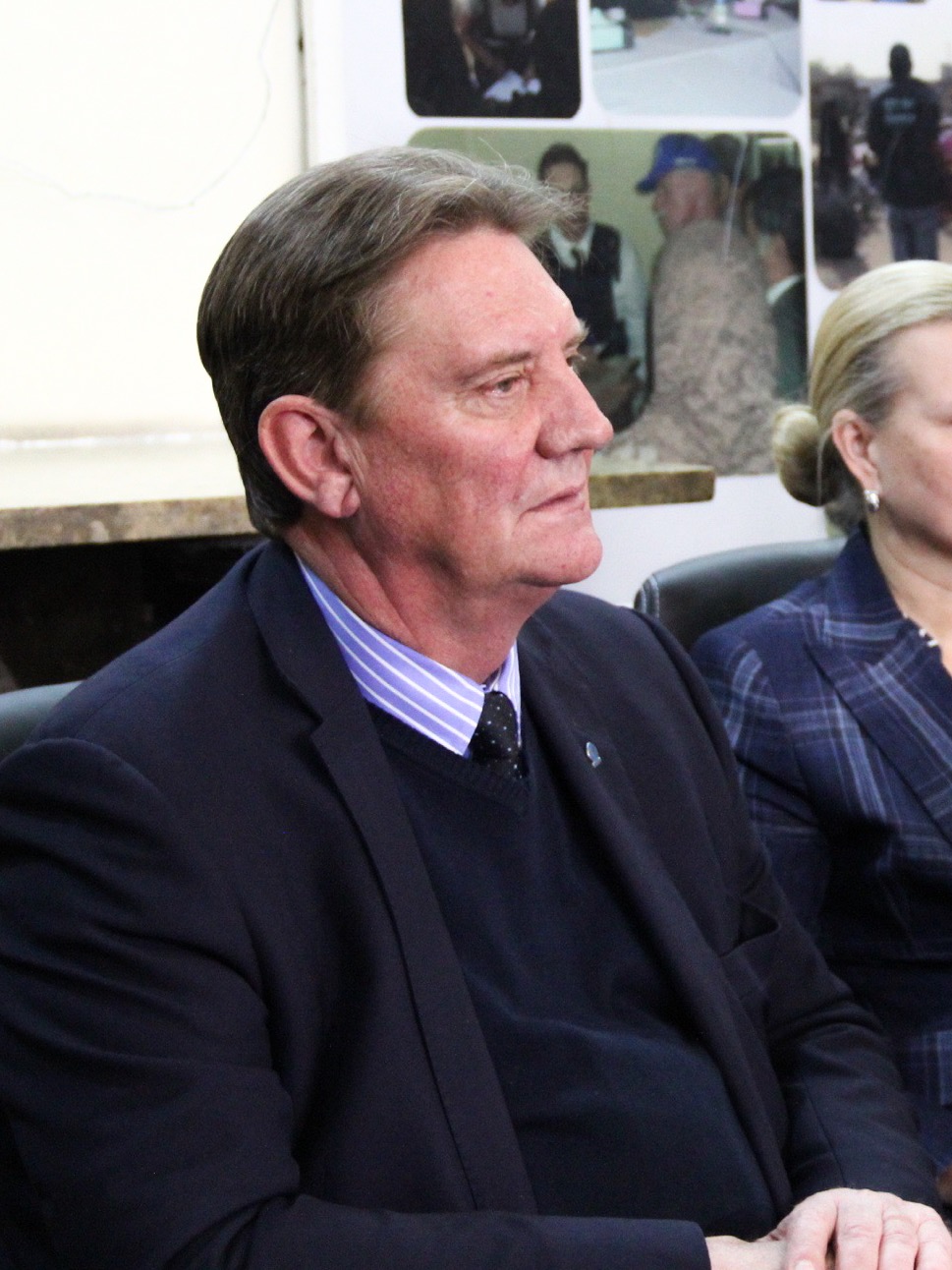Q&A: Bangladeshi photographer dedicates life to changing lives of others
Q&A: Bangladeshi photographer dedicates life to changing lives of others

DHAKA, Bangladesh, June 16 (UNHCR) - Saiful Huq, a 30-year-old Bangladeshi photographer known as Omi, has won an armful of prestigious international awards in just five years of professional work covering labour rights, climate change and, more recently, refugees. This week his photographs of refugees from Myanmar's northern Rakhine State - an ethnic, linguistic and religious minority commonly referred to as the Rohingya - have gone on exhibit at the East Gallery in London's Brick Lane, heart of the Bangladeshi community in the British capital. The exhibit comes ahead of World Refugee Day on Sunday. UNHCR's spokesperson for Asia, Kitty McKinsey, sat down recently to talk with Omi in Dhaka. Excerpts from the interview:
What made you take up photography?
I was studying engineering and I felt deeply that I have to do something more important with my life than just earning a life or having a corporate career. I love films, but I felt that was too big a medium. I was part of left-oriented student politics and, with my love of cinema, I felt passionate about images. I got in touch with a few photographers and saw the work of a few great masters like [Brazilian Sebastião] Salgado, and started to believe photography is something that can make a difference. So I bought my camera and started taking pictures. Then I decided to get a degree from a famous photography school in Bangladesh.
Just one year after taking up photography, you started winning major awards. How did that feel?
I was nominated for a National Geographic All Roads photography prize that is given to four photographers around the world every year. I remember that e-mail very clearly saying I was one of the winners. It was the first and the biggest award. When I was a child growing up, I was fascinated by National Geographic, so it was amazing to win this prize just one year after taking up photography. At that very moment I realized maybe I have the potential of becoming a photographer.
What made you want to photograph refugees in Bangladesh?
The former Dutch ambassador came to an exhibition of mine on climate change sponsored by the Dutch Embassy in Dhaka. She had been to the refugee camps (near Cox's Bazar) and she said with the kind of photography I do, I should go there and do something for these people. I was deeply touched. UNHCR arranged my trip and I went to Kutupalong, the first time I had been in a refugee camp.
I was born 10 years after Bangladesh's war of liberation ended, but I grew up with stories about our own refugees. Part of my family was killed and part became refugees and went to India. When I was very young, my mother used to talk about how bad those days were, what horrible things happen to a refugee. The minute I went to Kutupalong camp I remembered the face of my mother. I remembered how my father used to talk about those days in 1971. When I heard the stories of the children, the men, the women, and I walked around the camp, I really, really strongly felt I should do something. It was my story also because I grew up with these refugee stories, the stories of 1971.
What kind of stories in the camps really touched you?
The very basic story of the Rohingya, the way they are treated in Myanmar, the way they are beaten, the way they are killed, the way the women are raped. It's a very violent story.
Why do you care so much about the Rohingya when so many people in the world do not?
Thanks for asking this question. This is something I really need to share. First of all this is my own country. I have felt that the way the Rohingya are portrayed in the mainstream media in Bangladesh is simply not acceptable. They are portrayed as the most violent, most disloyal, most irresponsible people on the face of this Earth. Whatever bad is happening in Cox's Bazar, if there is a rape, killing, looting, hijacking, whatever, it is [allegedly] done by them. It is all made-up stories. This cannot be journalism. With a minimum level of honesty you have to know these stories cannot be true. I felt these people need a voice. I can't accept a one-sided story.
But you've gone further than addressing a Bangladeshi audience. What is your message for a world audience?
These people deserve a better life. For Bangladesh it is difficult. Bangladesh is a very poor country. If we have to support another few million people it is almost impossible. We cannot afford it. What I have seen on the ground and photographed, cannot go on like this. Global leaders have to find a solution for the Rohingya.
You worked last year with UNHCR on a project to teach photography to teenage refugees. What did you learn from your students?
I heard stories from the children that touched my heart. I asked them, "What do you want to be?" A refugee girl looked at me with blank eyes and said: "I can't study here." Someone would say, "Maybe I will live my whole life here." When you talked to these kids, you'd see they know things are very, very uncertain but they know some things for sure - they can't go back to their own country. They know that they are not regarded as citizens of Bangladesh. They know that theoretically they have to stay in the camps for the rest of their lives. They know they are not allowed to get much formal education, just enough to read but not enough to become anything in life. These kids are not like any others in Bangladesh. They know they don't belong anywhere, neither in Myanmar or Bangladesh. They know they don't have a real home. They know their parents will never be able to provide them with genuine shelter or protect their future. This is a very, very desperate situation. My mother used to tell me that during that time of war we knew that some day Bangladesh would get its freedom, we would win the war, we will go back home. Even if those kids knew they had a chance of going back home after 50 years, 60 years, 30 years, 10 years, they would become more positive.
What are your goals now?
In the last two months I have won eight major awards, but these awards cannot be the goal. As a photographer it was never in my mind that I would win big awards. What is very important for me is knowing in my heart that the lives of the people I photographed are at least a little different than the day before they were photographed. There are many different goals, as a person, as an artist, but this is what I want to do with my life: I want to change lives.
How do you think you can change the lives of the Rohingya refugees?
Their story has to be told in a balanced way, the real story of what is happening to these people. They are the forgotten refugees in the world. Almost no one talks about them. When they see these images and listen to these words and stories, I am sure people will say, "Let's try to find a solution."
Someone asked me, why do you take photographs? As long as the people I photograph are more important than my own photography, I will take photographs. It is a great feeling taking photographs, producing art, but it has to have a greater meaning. When I was very young, a famous photographer told me, "You'd better love photography because it's a very hard life. Sometimes you have assignments and sometimes you don't. Sometimes you have to work 11, 12 hours a day. Sometimes you will be beaten up, people will say bad things to you. Your life will be at risk." For me, the love comes from feeling life has changed for the people I have photographed. That is what keeps me going. Maybe I'm not changing the lives of a million people, but one or two is enough.








